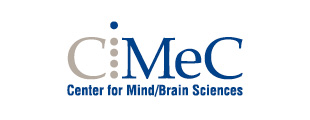Overview | Research directions | Members | Publications | Grants | Ongoing Collaborations
Overview
Increasing evidence supports the notion that brain plasticity involves distinct functional and structural components but their relationship is still unclear and its explanation is a major challenge within modern neuroscience. Transcranial non-invasive brain stimulation (NIBS) techniques like transcranial magnetic stimulation (TMS, rTMS) or transcranial electrical stimulation (tES) allow us to causally investigate how the modification of some parameters leads to a change in the outcomes. The idea is that the activity of the system, the state of the network involved in the task and the stimulation parameters interact to produce a specific result. TMS-EEG (TMS and electroencephalographic) coregistration allow us to study the interaction between neural areas during cognition, the causal role of specific brain area in behaviour, but also the relationship and connectivity between activities in different brain areas. By means of TMS-EEG is possible to establish the causal role in the communication between cortical areas and the impact upon effective interactions of neuronal networks.
Research directions
- TMS-EEG coregistration in the exploration of the human cortical connectome
The human brain is a complex network in which hundreds of brain regions are interconnected via thousands of anatomical pathways. Brain function emerges from the activation of these pathways, which can be dynamically reconfigured according to contingent demands. Such flexibility underlies the human brain’s ability to perform a wide variety of cognitive functions and to adapt and adjust to changing environments. We hypothesized that the efficiency of the brain is based on the system's ability to exploit the dynamics of these networks, and to selectively integrate sensory, cognitive, and motor representations at the appropriate level. In this context, a strategy to measure this dynamism is needed to probe the human brain and its integrity. This project aims to combine state-of-the-art multimodal neuroimaging and brain stimulation techniques, to achieve an advanced account of brain dynamics. To pursue this aim we propose an integrative approach, composed of transcranial magnetic stimulation (TMS), electroencephalography (EEG), magnetic resonance imaging (MRI), functional magnetic resonance imaging (fMRI), as well as TMS-EEG and EEG guided TMSfor the investigation of causal relationship brain-function. - Neurostimulation and neuromodulation for the induction of plasticity phenomena
The core of the group activity is driven by the goal to understand if cortical plasticity can be induced and manipulated by means of non-invasive brain stimulation in healthy adult brains, to understand what is the relation between induced synaptic plasticity and cognitive plasticity, and how cognitive plasticity can be sustained by the activity of a “functional neuronal network” and how this network is related with the condition of the subject. To achieve these objectives, we use non-invasive brain stimulation techniques like TMS, rTMS, TBS and tES (i.e., tDCS, tACS, tRNS) alone or combined with other research methods (i.e., TMS-EEG co-registration).
Members
- Carlo Miniussi PhD, Principal Investigator
- Arianna Brancaccio, Postdoctoral Fellow
- Matteo De Matola, PhD Student
Publications
For a complete list see Carlo Miniussi personal page
Grants
- MUR PRIN 2022 Adaptive Brain Connectivity and Cognition ABC&C (2023-2025).
- HORIZON-WIDERA: TWINNIBS Twinning for excellence in non-invasive brain stimulation in Western Balkans. (2022-2025).
Ongoing Collaborations
- Irina Harris, School of Psychology, Sydney University, Sydney, Australia
- Marta Bortoletto, Neurofisiologia, IRCCS The Saint John of God Clinical Research Centre, Brescia, Italy
- Maria Concetta Pellicciari, Dipartimento di Scienze Umane Università LUMSA Roma, Italy
- Jesús Cespón, BCBL Basque Center on Cognition, Brain, and Language, Donostia/San Sebastián, Spain
- Carlo Alberto Defanti, Ospedale “Briolini”, Centro Alzheimer, Gazzaniga, Italy
- Nadia Bolognini, Dipartimento di Psicologia, Università di Milano Bicocca, Italy
- Justin A. Harris, School of Psychology, Sydney University, Sydney, Australia
- Gregor Thut, Centre for Cognitive Neuroimaging, Department of Psychology, University of Glasgow, United Kingdom.
- A. Giustiniani and F. Burgio, IRCCS San Camillo Hospital, Venice, Lido, Italy

